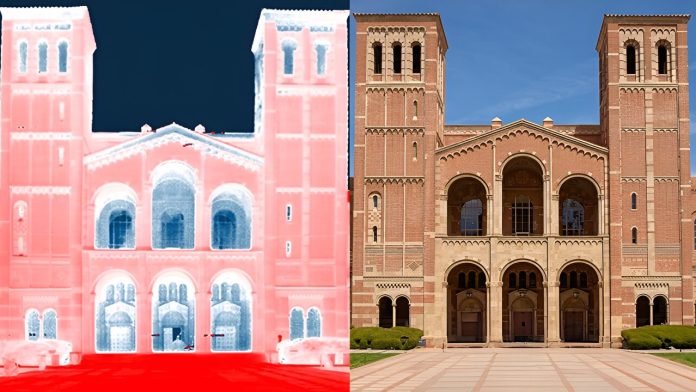
As global temperatures rise, finding sustainable ways to cool and heat buildings has become more critical than ever.
Researchers at UCLA, led by Aaswath Raman, an associate professor of materials science and engineering, have developed an affordable and scalable method to manage building temperatures year-round.
Their work could lead to significant energy savings and help protect communities from extreme weather.
In a study published in Cell Reports Physical Science, the team introduced a new technique that controls how heat moves through common building materials.
Heat, which we feel as warmth from hot surfaces, travels differently depending on its surroundings.
For example, heat moves between buildings and their environment, like streets and neighboring structures, across a broad spectrum.
However, heat exchanges between buildings and the sky occur within a much narrower part of the infrared spectrum, known as the atmospheric transmission window.
This difference has made it challenging to cool buildings that don’t have much sky-facing surface area.
Historically, cooling buildings by reflecting sunlight off roofs and walls has been a common practice in places like Santorini, Greece, and Jodhpur, India.
In recent years, the use of super white paint on roofs to reflect sunlight and radiate heat into the sky has gained popularity. However, managing heat on walls and windows has remained a complex issue.
The UCLA researchers took inspiration from the success of cool roof coatings and aimed to create a similar effect for walls and windows. They experimented with materials that could absorb and emit heat more effectively within the atmospheric window.
By doing so, they found that buildings coated with these materials could stay cooler in the summer and warmer in the winter compared to traditional materials.
One of their most exciting discoveries was that polypropylene, a material commonly found in household plastics, could efficiently manage heat in this way.
Despite its everyday nature, polypropylene’s scalability means it could soon be used to regulate temperatures in buildings around the world.
The team’s approach offers multiple benefits. It uses readily available, cost-effective materials and reduces the need for air conditioners and heaters, which are expensive to operate and contribute to carbon emissions.
This passive cooling and heating method is sustainable, making it an excellent solution for energy conservation.
Jyotirmoy Mandal, the study’s first author and now an assistant professor at Princeton University, highlighted that this method could be especially beneficial for low-income communities. These areas often lack access to effective cooling and heating systems, making them vulnerable to extreme weather.
The researchers are now working to demonstrate their technique on larger buildings and measure the potential energy savings, particularly in heat-prone regions like Southern California.
This breakthrough could pave the way for more energy-efficient buildings and help mitigate the impacts of climate change on vulnerable populations.



